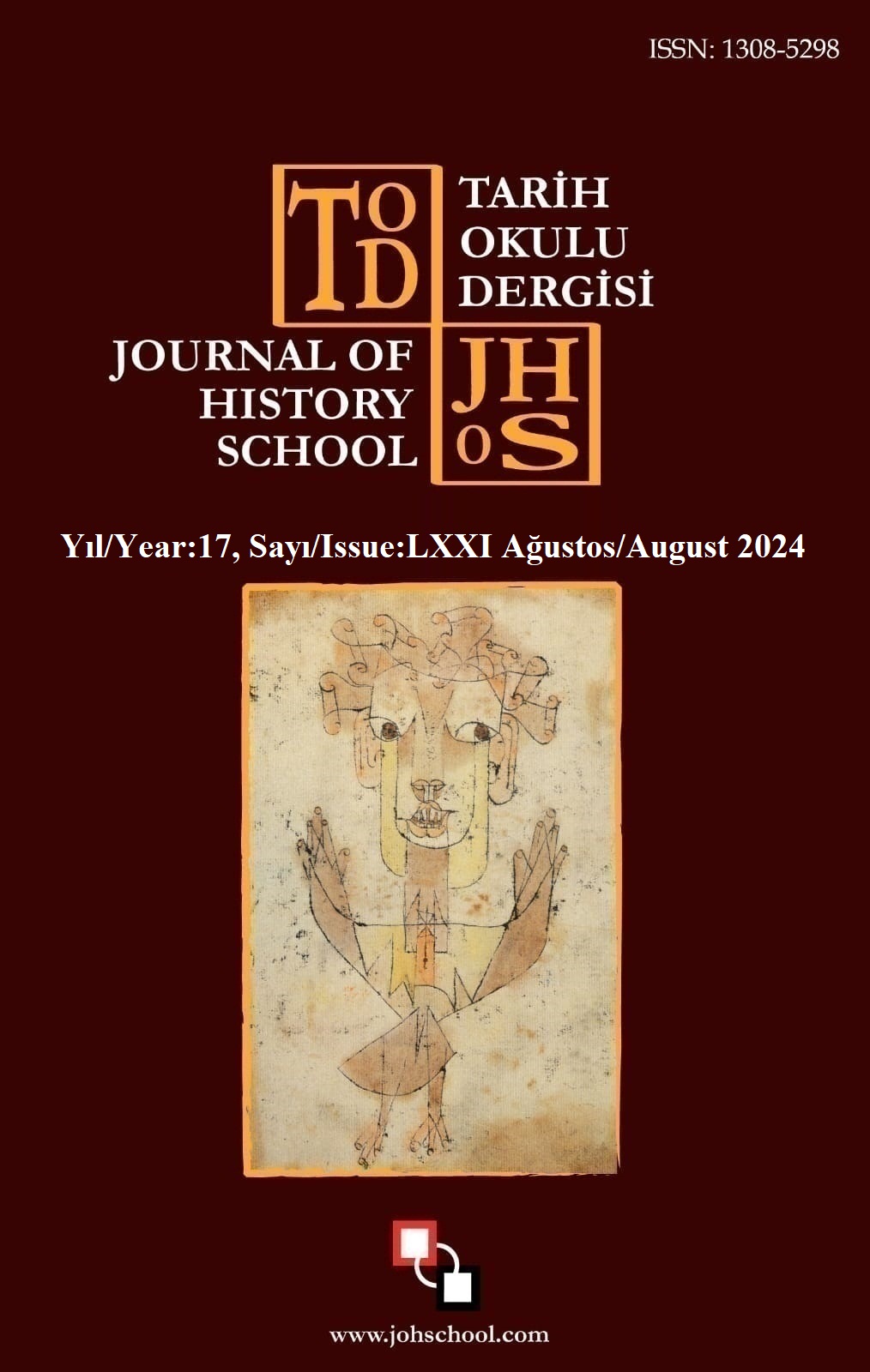OSMANLI İMPARATORLUĞU’NUN XIX. YÜZYILDAKİ MODERNLEŞME ÇABALARI: SOSYAL HASTALIKLAR VE DÖNEMİN REÇETELERİ
Author :
Abstract
Çağdaş sosyoloji literatüründe modern, modernleşmiş ya da modernleşen gibi terimler, çeşitli kriterler üzerinden bir durum tespiti yapmak için kullanılır. Günümüz paradigması Batı modernleşmesini çeşitli esaslar üzerinden açıklar. Bu esaslar coğrafi keşifler, aydınlanma, Rönesans, Reform, Kalvinizm ve Sanayi Devrimi gibi köklü hareketler toplumla birlikteliğin bir ürünü olarak imgelenir. Her bir yenilik hareketi ise modernliğe giden önemli bir yol olarak açıklanır. Burada dikkat edilmesi gereken ana konu modernleşmenin temel dayanağı olarak neyin görüleceğidir. Batı özelinde sekülerleşme, siyasi ve sosyal gelişme gibi konular modernleşmeyi sağlayan temel saikler olarak görülebilir. Türklerin modernleşme çabalarının ise askeri alanda geri kalmışlığın bir tezahürü olarak ortaya çıktığı söylenebilir. XVII. Yüzyıl Osmanlı’sında askeri yenilgilerin artması, batının ekonomik ve askeri devrimine yetişememe durumu gücü elinde bulunduran kesimi bir değişim düşüncesi içerisine bırakır. İlk olarak III. Selim ve daha sonra halefi II. Mahmud Osmanlı İmparatorluğunun ilk köklü dönüşüm süreçlerine imza atan padişahları olarak tarihteki yerlerini aldılar. Padişahların yanı sıra devrin aydınları da “Devleti nasıl kurtarırız?” sorusu üzerine çeşitli fikirler öne sürdüler. İmparatorlukta yaşanan bütün bu gelişmelere rağmen XVII. ve XVIII. Yüzyıldaki parçalı ve bütünlük göstermeyen modernleşme çabaları Batı kültürünün şekilsel yönüne öykünmeci bir tavrın ötesine geçemedi. Bu iki yüzyıl imparatorluğun dağılmaması adına çeşitli sosyal değişim modellerini de beraberinde getirdi. Bunlardan ilki Gülhane Hattı Hümayunu ya da diğer adıyla Tanzimat Fermanı iken Islahat Fermanı da sorunları çözmek ve imparatorluğun dağılmasını önlemek adına ortaya atılmış modellerdi. Bu çalışmanın amacı sosyolojinin temel araştırma konularından biri olan modernleşmeyi Osmanlı İmparatorluğunun yapısal unsurları bağlamında ele almaktır. Çalışmanın temel varsayımı ise Osmanlı’nın tarihsel süreçte modernleşmeye duyduğu ilginin padişahların girişimleriyle, dönem dönem ve parçalı olduğu yönündedir. Osmanlı modernleşmesinin tarih disiplininin yanı sıra sosyolojik bağlamda ele alınacak olması, bu çalışmayı literatürdeki diğer çalışmalardan ayıran ve makaleyi özgün kılan en önemli unsurdur
Keywords
Abstract
In the contemporary sociological literature, terms such as modern, modernized or modernized are used to make a situation determination through various criteria. Today's paradigm explains Western modernization on various grounds. These principles are imagined as a product of the association with the society of geographical discoveries, the Enlightenment, the Renaissance, the Reformation, Calvinism, and the industrial revolution. Each innovation movement is explained as an important path to modernity. The main issue to be considered here is what will be seen as the main basis of modernization. In the West, issues such as secularization, political and social development can be seen as the main motives for modernization. It can be said that the modernization efforts of the Turks emerged as a manifestation of backwardness in the military field. The increase in military defeats in the seventeenth century Ottoman Empire and the inability to keep up with the economic and military revolution of the West left the power in the thought of change. First, Selim III and then his successor Mahmud II took their place in history as the first sultans of the Ottoman Empire to undertake radical transformation processes. In addition to the sultans, the intellectuals of the period also put forward various ideas on the question "How can we save the state?" Despite all these developments in the empire, the fragmented and uncohesive modernization efforts of the seventeenth and eighteenth centuries did not go beyond an attitude that emulated the formal aspect of Western culture. These two centuries brought with them various models of social change in order to prevent the disintegration of the empire. The first of these was the Gülhane Line Humayunu, also known as the Tanzimat Edict, while the Reform Edict was a model put forward to solve problems and prevent the disintegration of the empire. The aim of this study is to discuss modernization, which is one of the main research topics of sociology, in the context of the structural elements of the Ottoman Empire. The basic assumption of the study is that the interest of the Ottomans in modernization in the historical process was periodically and fragmented with the initiatives of the sultans. The fact that Ottoman modernization will be handled in a sociological context as well as the discipline of history is the most important factor that distinguishes this study from other studies in the literature and makes the article original.





